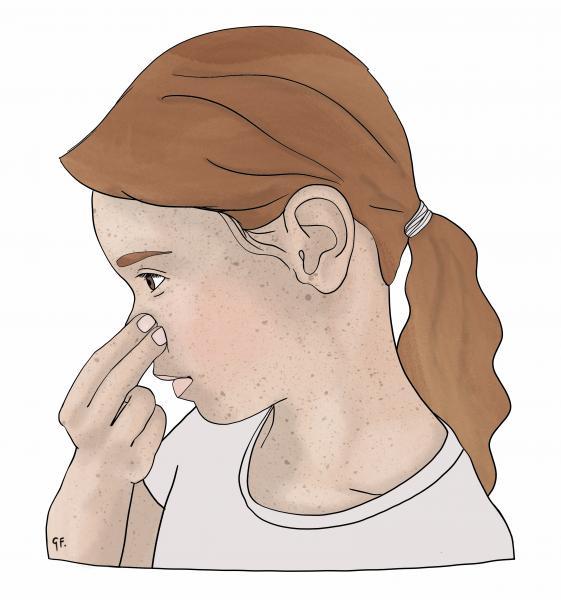Key points about nosebleeds in children
- nosebleeds are common in tamariki
- some tamariki get lots of nosebleeds
- nosebleeds are usually nothing to worry about
- sit your child up, tilt their head forward and apply pressure over the soft part of their nose for 10 minutes (continuously) if they have a nosebleed
- if they are unwell or their nosebleed won’t stop, take them to a health professional urgently
What is a nosebleed?
A nosebleed, also known as epistaxis, happens when there is bleeding from the inside of the nose. The bleeding usually comes from the tissue that lines the inside of the nose.
Causes of nosebleeds
Nosebleeds in tamariki can happen for different reasons. Tamariki can get nosebleeds if they:
- pick their nose
- put things up their nose or get things stuck in their nose
- blow their nose too hard
- bump or injure their nose
- have allergies like hayfever
- get an infection in their nose or sinuses
- overuse certain nose spray medicines
- have an irritated nose because of dry air
Rare causes of nosebleeds include medical conditions such as bleeding disorders.
Managing a nosebleed
Stay calm
Nosebleeds can be alarming for you and your child. If your child has a nosebleed, stay calm. Staying calm helps keep your child calm, as some tamariki can get upset at the sight of blood. Crying can make nosebleeds worse.
Sit your child up
Sit your child up with their head tilted slightly forward. Don’t tilt your child's head back or lie them down. If available, place a towel or bowl on their lap to collect dripping blood. If your child has blood in their mouth, encourage them to spit it out instead of swallowing it.
Apply pressure to the nose
Pinch the nose by applying firm pressure with your thumb and finger over both nostrils (the soft part of the nose). Older tamariki may be able to do this themselves.

Illustration showing the correct way to apply pressure to the nose during a nosebleed.
Continue for 10 minutes
Keep pressure over the nostrils for 10 minutes while your child sits up and keeps their head still. Set a timer and wait the full 10 minutes. Don’t remove your fingers to check if the bleeding has stopped.
Repeat the process
Repeat the process if your child’s nose is still bleeding after 10 minutes of pressure.
If your child’s nose is still bleeding after applying pressure for 20 minutes, see a health professional urgently.
When to get medical help for a nosebleed
See a health professional if your child:
- has a nosebleed and looks pale or unwell
- is swallowing lots of blood, and it is causing them to vomit
- appears to have a lot of blood coming from their nose
- feels breathless, weak or dizzy with their nosebleed
- has a nosebleed and is younger than 2 years old
- has repeated nosebleeds over several weeks
- has more than 5 nosebleeds in a year that have needed a trip to the hospital
Treating nosebleeds
Creams and ointments
If your child has had repeated nosebleeds, the health professional may give you a cream or ointment to put up their nose to help stop the bleeding.
Dressings
If your child has a nosebleed that won’t stop, the health professional may pack a special cloth dressing into their nose. Some dressings dissolve. If the dressing isn’t dissolvable, your child will need a follow-up appointment 24 to 48 hours later to have the dressing removed.
Cautery
Sometimes, a health professional can stop the bleeding by putting a special chemical inside the nose. Before this, the health professional usually uses a local anaesthetic.
Specialist review
If your child has ongoing nosebleeds or a nosebleed that won’t stop, they may need to see an ear, nose and throat (ENT) specialist. There are procedures that can help stop nosebleeds.
Aftercare for nosebleeds
Make sure your child doesn’t blow or pick their nose for around 24 hours after a nosebleed. Picking or blowing the nose may cause another nosebleed.
Encourage your child to rest and avoid any strenuous physical activity. Hot showers and baths can cause a nosebleed to start again, as well as drinking hot drinks, so avoid these for 24 hours after a nosebleed.
